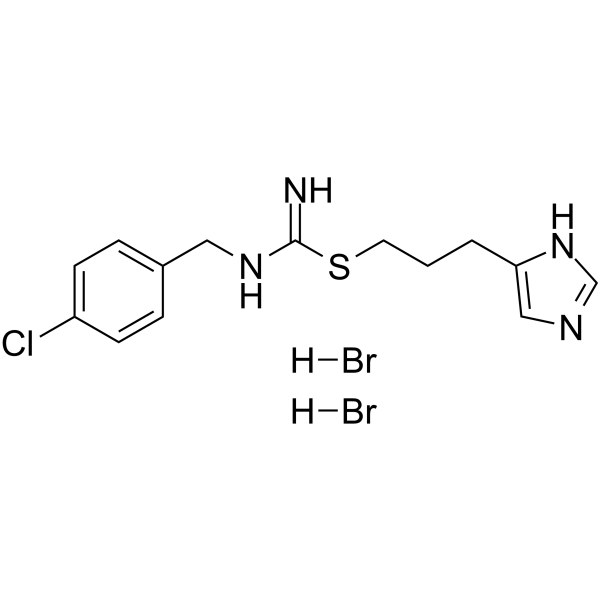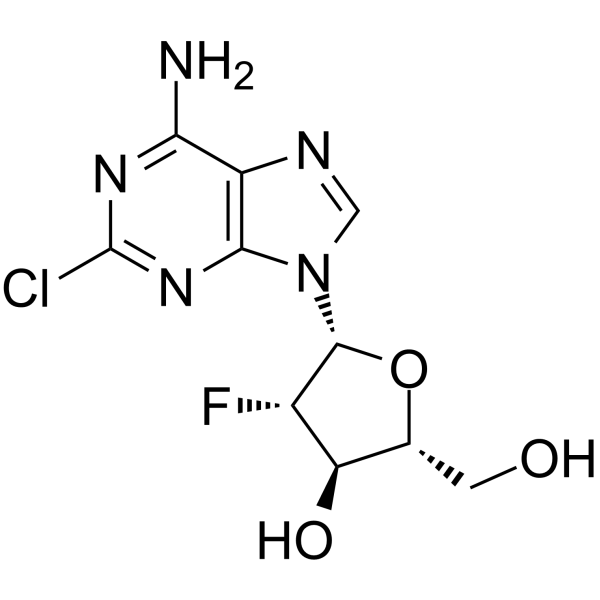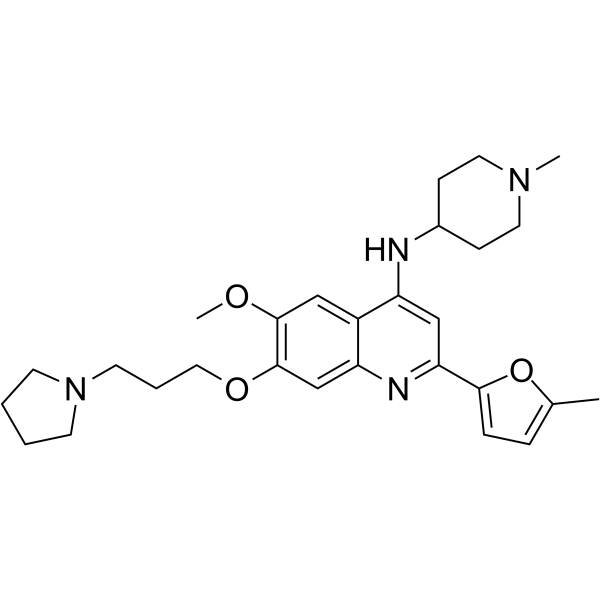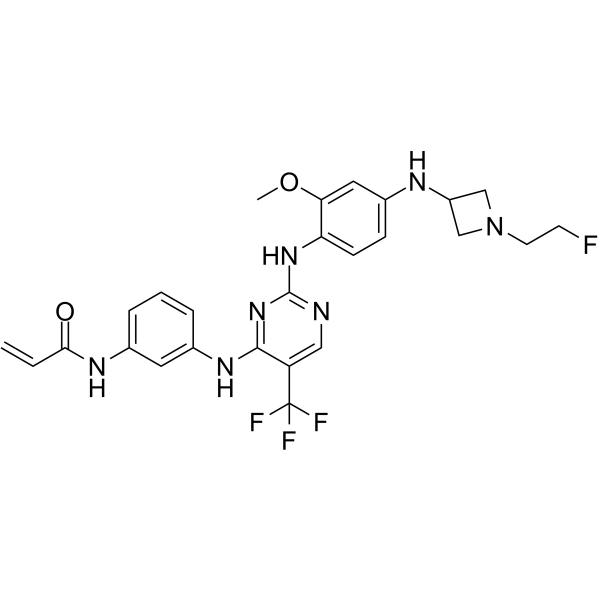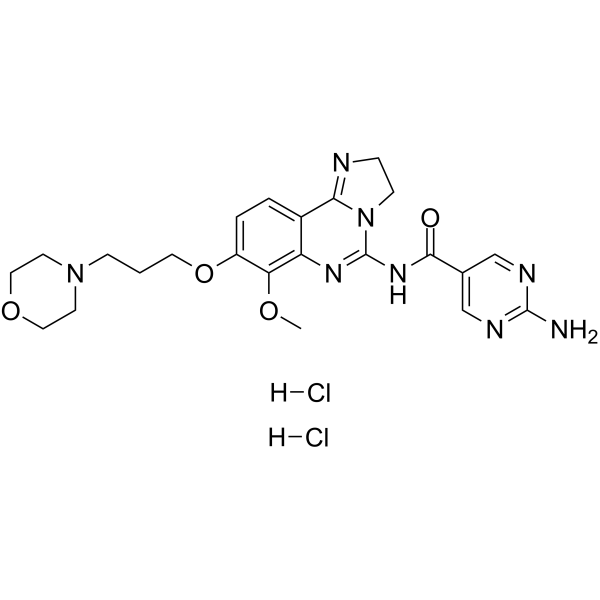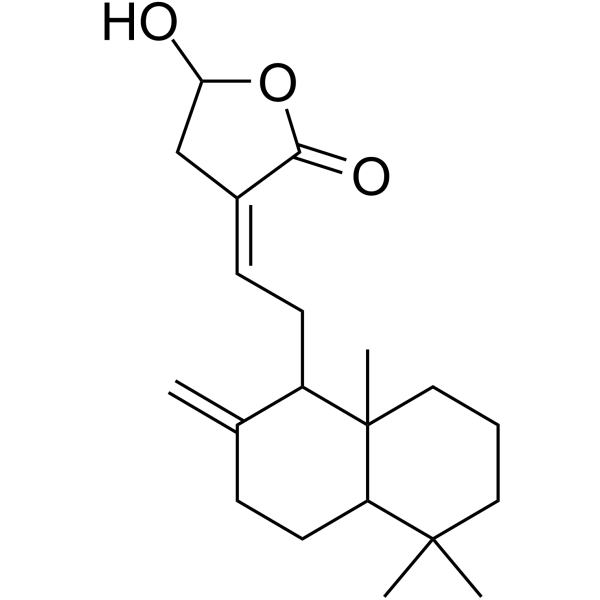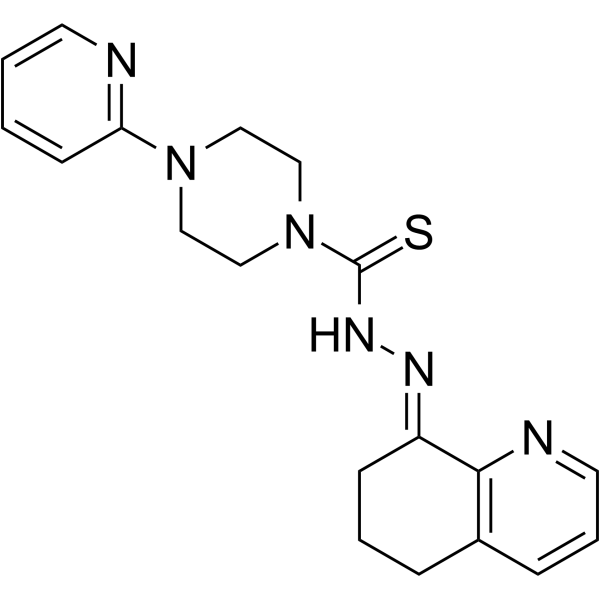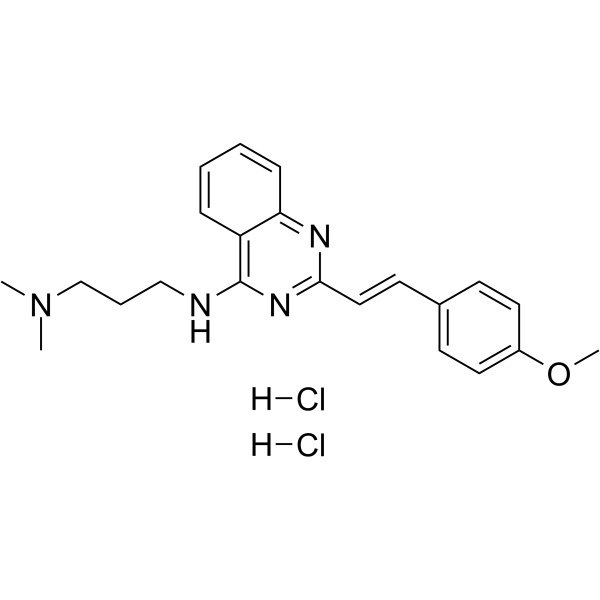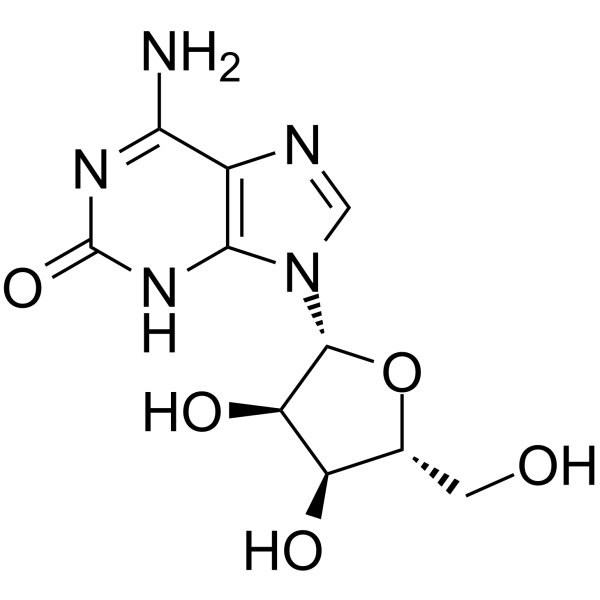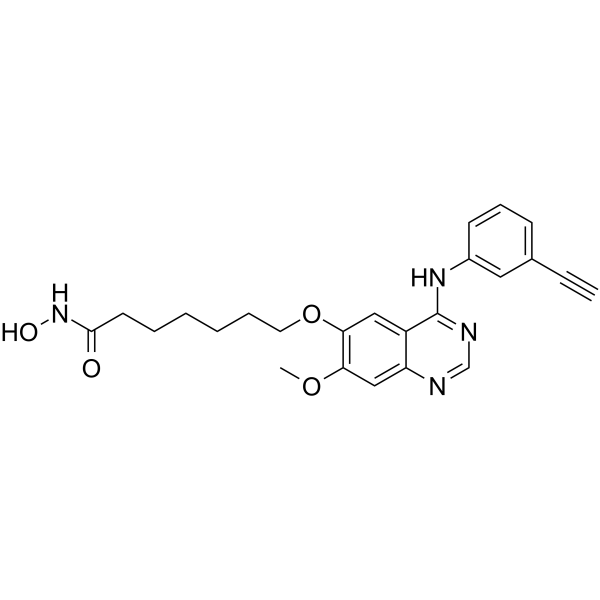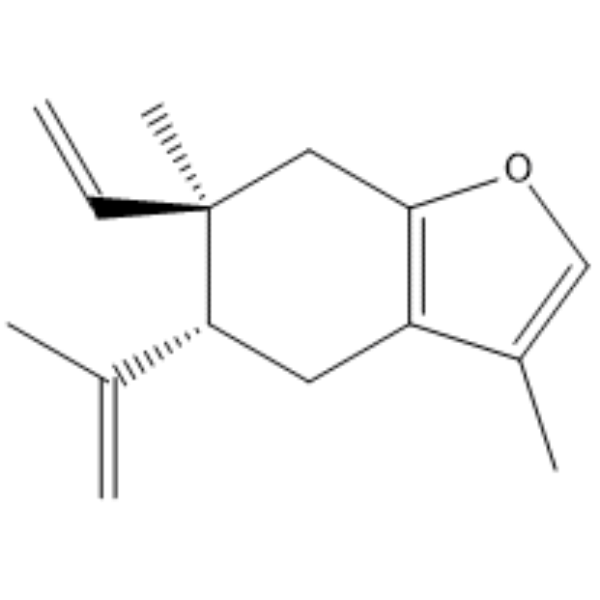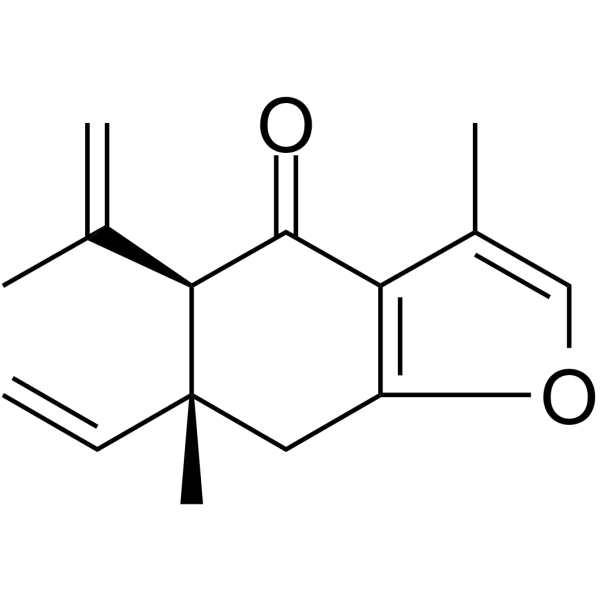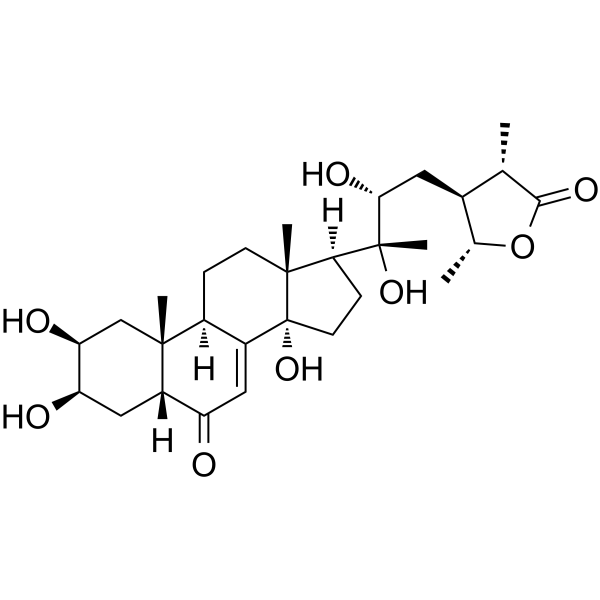|
BP10560
|
Clobenpropit dihydrobromide
|
|
|
|
|
Clobenpropit dihydrobromide is a potent antagonist and inverse agonist of histamine H3R (histamine H3LR,pEC50 of 8.07)
|
|
BP10274
|
Clofarabine
|
|
|
|
|
Clofarabinem, a second generation purine nucleoside analog with antineoplastic activity, inhibits the enzymatic activities of ribonucleotide reductase (IC50 = 65 nM) and DNA polymerase.
|
|
BP10837
|
CM-272
|
|
|
|
|
CM-272 is a dual G9a/DNA methyltransferases (DNMTs) inhibitor.
|
|
BP10442
|
CNX-2006
|
|
|
|
|
CNX-2006 is a novel irreversible mutant-selective EGFR inhibitor with IC50 of < 20 nM, with very weak inhibition at wild-type EGFR.
|
|
BP10131
|
Concanavalin A
|
|
|
|
|
Concanavalin A is a plant lectin that is a T cell mitogen. It induces apoptosis in human fibroblasts.
|
|
BP10051
|
Copanlisib
|
|
|
|
|
Copanlisib is a phosphoinositide 3-kinase (PI3K) inhibitor with potential antineoplastic activity. Copanlisib inhibits the activation of the PI3K signaling pathway, which may result in inhibition of tumor cell growth and survival in susceptible tumor cell populations. Activation of the PI3K signaling pathway is frequently associated with tumorigenesis and dysregulated PI3K signaling may contribute to tumor resistance to a variety of antineoplastic agents.
|
|
BP10472
|
Copanlisib dihydrochloride
|
|
|
|
|
Copanlisib dihydrochloride is an ATP-competitive pan-class I PI3K inhibitor (IC50s: 0.5 nM, 0.7 nM, 3.7 nM and 6.4 nM for PI3Kα, PI3Kδ, PI3Kβ and PI3Kγ). Copanlisib dihydrochloride has superior antitumor activity and it also has more than 2,000-fold selectivity against other lipid and protein kinases, except for mTOR.
|
|
BP10216
|
Coronarin D
|
|
|
|
|
Coronarin D shows promising antifungal activity against C. albicans in vitro, the minimum inhibitory concentration (MIC) and the minimum fungicidal concentration (MFC) were 2 and 4 mg/mL, respectively; it is active against tested Gram-positive bacteria, inactive for tested Gram-negative bacteria, and weakly active against tested fungi; using coronarin D-antibiotic drug combination can combat the infectious diseases.Coronarin D inhibits NF-kappaB activation pathway, which leads to inhibition of inflammation, invasion, and osteoclastogenesis, as well as potentiation of apoptosis.
|
|
BP10070
|
COTI-2
|
|
|
|
|
COTI-2, an orally available thiosemicarbazone, is an activator of mutant forms of the p53 protein with potential antineoplastic activity.
|
|
BP10242
|
CP-31398 dihydrochloride
|
|
|
|
|
CP 31398 dihydrochloride is a p53 stabilizer which stabilizes the active conformation of p53 and promotes p53 activity in cancer cell lines with mutant or wild-type p53.
|
|
BP10788
|
CP-380736
|
|
|
|
|
CP-380736 is an epidermal growth factor receptor (EGFR) inhibitor. EGFR is a tyrosine kinase that activates MAPK, JNK, and Akt pathways, and is an important mediator of several types of cancer.
|
|
BP10832
|
CPI1189
|
|
|
|
|
REN-1189 is a TNF-a release inhibitor potentially for the treatment of sciatica and postherpetic neuralgia.
|
|
BP10799
|
CPI-360
|
|
|
|
|
CPI-360 is a potent, selective, and SAM-competitive EZH1 inhibitor with IC50 of 102.3 nM, >100-fold selectivity over other methyltransferases.
|
|
BP10818
|
Crotonoside
|
|
|
|
|
1. Crotonoside has much more active than adenosine in reducing the blood pressure in rabbits and cats, in decreasing the tone of isolated intestinal strips of the rabbit, guinea pig and hamster and in stimulating the isolated uterus of guinea pigs and hamsters. 2. Crotonoside inhibits the growth of S-18 and Ehrlich solid tumor in mice at the optimal doses of 96 mg/kg/day x 12 and 48 mg/kg/day x 12, with 1-T/C values of 65% and 6%, respectively.
|
|
BP10913
|
CT-1
|
|
|
|
|
CT-1 is a DNA minor groove ligand and causes p53-dependent breast cancer cell apoptosis.
|
|
BP10020
|
CUDC-101
|
|
|
|
|
CUDC-101 is a potent inhibitor of HDAC, EGFR and HER2 with IC50s of 4.4, 2.4 and 15.7 nM, respectively.
|
|
BP10779
|
Curzerene
|
|
|
|
|
Curzerene is a sesquiterpene is isolated from the rhizome of Curculigo orchioides Gaertn with anti-cancer activity. Curzerene induces cell apoptosis.Curzerene inhibits glutathione S-transferase A1 (GSTA1) mRNA and protein expression.
|
|
BP10944
|
Curzerenone
|
|
|
|
|
Curzerenone holds great promise for use in chemopreventive and chemotherapeutic strategies, it has slightly effective against E. coli (IZ = 10.8 ± 0.52).
|
|
BP10749
|
Cyasterone
|
|
|
|
|
Cyasterone, a natural EGFR inhibitor, can inhibit the growth of A549 and MGC823 cells, via regulating EGFR signaling pathway, it may be a promising anti-cancer agent. Cyasterone has antifeeding activity.
|
|
BP10623
|
Cyclocurcumin
|
|
|
|
|
Cyclocurcumin, a curcumin derivative, exhibits anticancer, anti-inflammatory, and immune-modulating abilities and is a potential compound for the treatment of rheumatoid arthritis as predicted by the MM-PBSA method. It may have a therapeutic potential as a novel antivasoconstrictive natural product. Cyclocurcumin offers higher neuronal protection than curcumin, they both reduced the level of ROS caused by MPP+ treatment.
|
